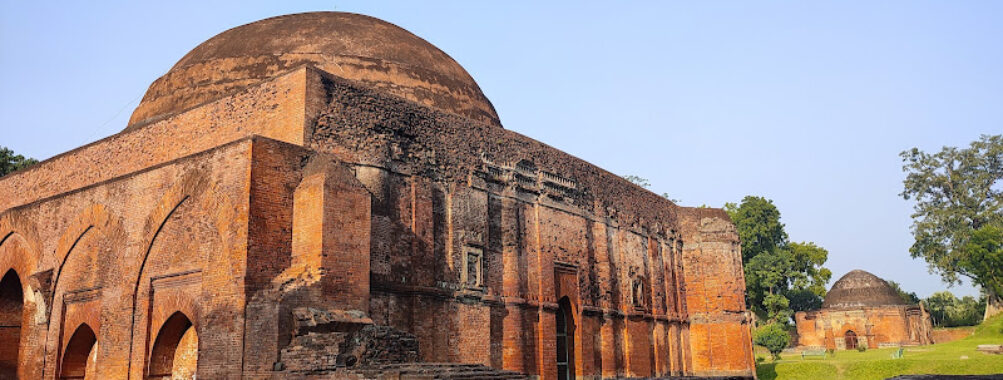
Chika or Chamkan mousoleum
Table of Contents
Description
The Chika or Chamkan Mausoleum is one of those places that quietly commands respect and curiosity all at once. It’s not your typical tourist trap with flashy signs and hoards of selfie sticks, but rather a spot that invites you to slow down and soak in centuries of history and culture. This mausoleum stands as a testament to the rich heritage of the area, blending architectural finesse with a spiritual aura that’s hard to put into words. If you’re someone who loves to wander off the beaten path and dive deep into the stories etched in stone and mortar, this site will definitely speak to you.
What’s really cool about the mausoleum is how it balances being a solemn monument with a place that’s surprisingly welcoming to families, including kids. It’s not just a place for history buffs or archaeology geeks; it’s got a vibe that sparks curiosity in visitors of all ages. And trust me, seeing little kids marvel at the intricate carvings and the sheer age of the site adds a warmth to the whole experience that you don’t get at more commercial sites.
Now, it’s fair to say that the experience here isn’t flawless—some folks might find the facilities a bit basic or the signage lacking in detail, but honestly, that’s part of the charm. It keeps the place feeling authentic and unspoiled by over-commercialization. So, if you’re up for a bit of adventure and don’t mind a little rough-around-the-edges charm, the Chika Mausoleum rewards you with a genuine slice of history and a peaceful atmosphere that’s rare these days.
Key Features
- Architectural blend of Islamic and regional styles, showcasing intricate stone carvings and calligraphy
- Historical significance as a mausoleum and mosque, offering spiritual and cultural depth
- Family-friendly environment that welcomes children and encourages educational visits
- Relatively quiet and less crowded compared to other tourist hotspots, perfect for reflective exploration
- Located near other archaeological and historical landmarks, making it a great stop on a broader cultural tour
- Open-air layout allowing visitors to appreciate the surrounding landscape and local ambiance
Best Time to Visit
If you ask me, timing your visit right can make all the difference. The best time to swing by the Chika Mausoleum is during the cooler months, typically from late autumn to early spring. The weather is just more forgiving then—no sweaty hikes or sunburn worries, which is a big plus if you’re exploring with family or kids. Early mornings or late afternoons are golden hours too, when the sunlight casts dramatic shadows that really bring the carvings and architecture to life.
And here’s a little insider tip: visiting on weekdays can save you from the weekend crowds, which tend to swell a bit as locals and tourists alike come to soak in the history. Plus, if you’re lucky, you might catch a local guide or caretaker who’s happy to share stories and tidbits that you won’t find in any brochure.
How to Get There
Getting to the Chika Mausoleum isn’t a wild goose chase, but it does require a bit of planning. The site is accessible by road, and depending on where you’re coming from, you can hop on local buses or hire a taxi. If you’re the adventurous type, renting a scooter or bike can be a fun way to get there while soaking up the local scenery along the way. Just keep in mind that the last stretch might be on smaller, less maintained roads, so go slow and enjoy the ride.
Public transport options might not be super frequent, so it’s a good idea to check schedules ahead or arrange private transport if you’re on a tight itinerary. Parking near the site is usually available but limited, so arriving early can save you some hassle. And if you’re coming from a nearby city or town, consider combining your trip with visits to other historical spots in the region to make the most of your day.
Tips for Visiting
Here’s the deal: visiting the Chika Mausoleum is as much about soaking in the atmosphere as it is about ticking off a historical site. So, take your time. Don’t rush through just to say you’ve been there. Bring a notebook or your phone to jot down or snap the details that catch your eye—those little inscriptions or design elements that tell a story.
Wear comfortable shoes because you’ll likely be walking on uneven surfaces, and trust me, those cobblestones aren’t kidding around. Also, modest dress is recommended since it’s a religious site, and out of respect for the locals and the place itself. If you’re visiting with kids, bring some snacks and water; while the site is welcoming to families, amenities might be limited.
One thing I always recommend is chatting with local guides or people around the site. Their stories add a layer of richness that you just can’t get from plaques or guidebooks. Plus, it’s a great way to connect with the place on a more personal level. And hey, don’t forget your camera—there are some seriously stunning photo ops here, especially if you catch the light just right in the late afternoon.
Finally, be mindful of the site’s preservation. It’s a treasure that’s been standing for centuries, so a little care and respect from visitors go a long way in keeping it around for future generations to discover and love.
Location
Places to Stay Near Chika or Chamkan mousoleum
Find and Book a Tour
Explore More Travel Guides
No reviews found! Be the first to review!